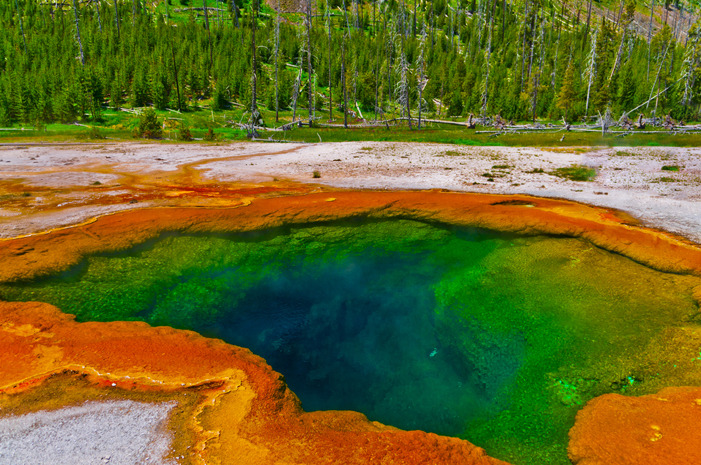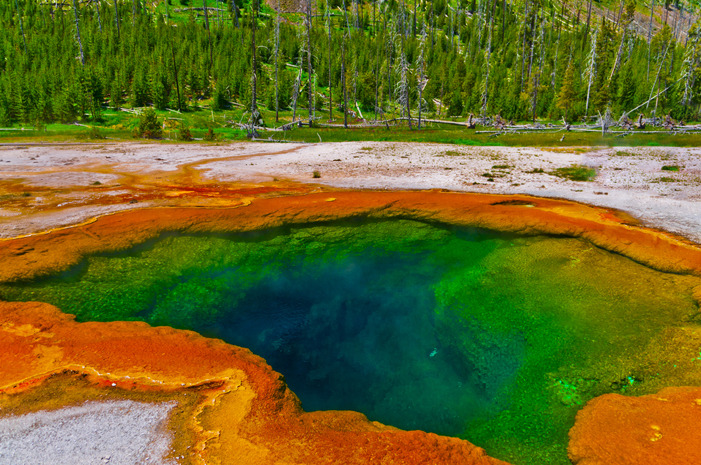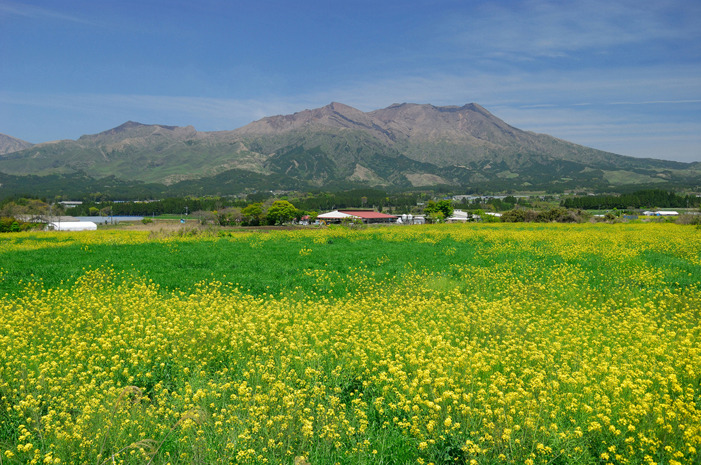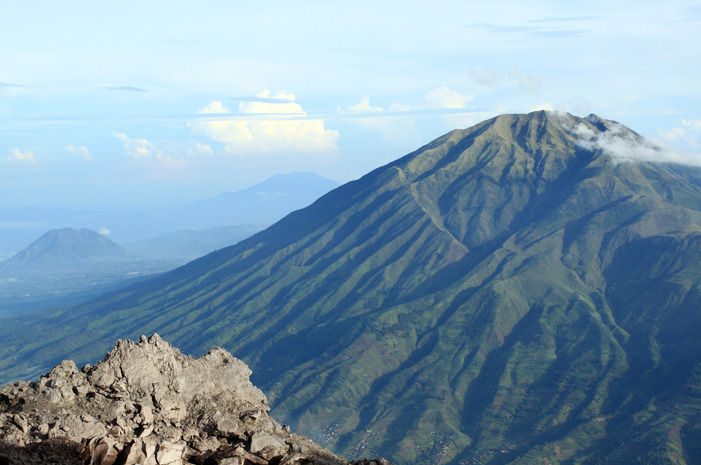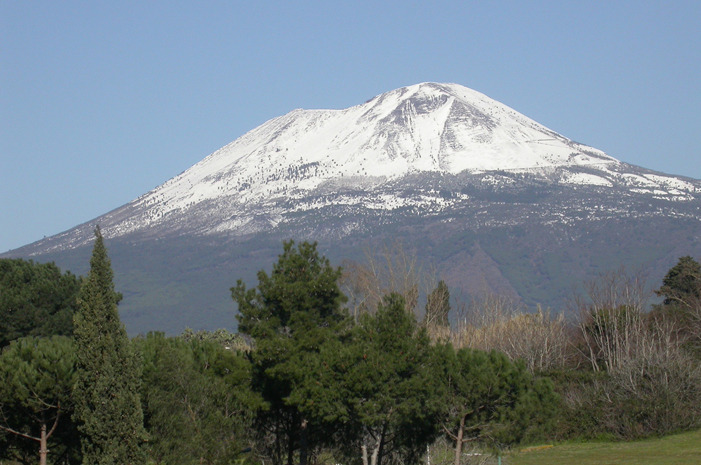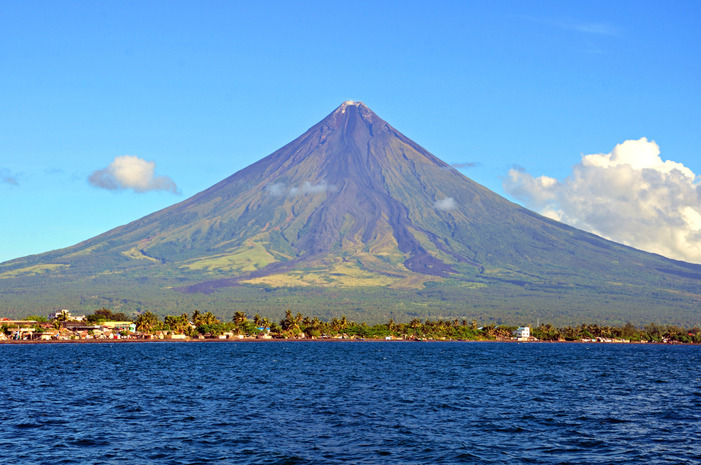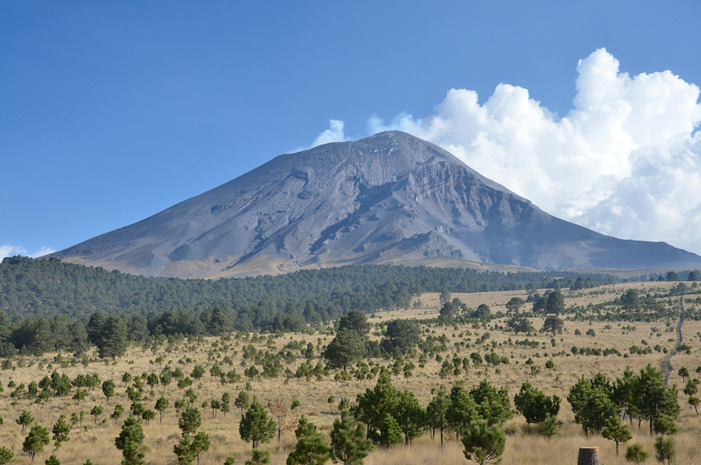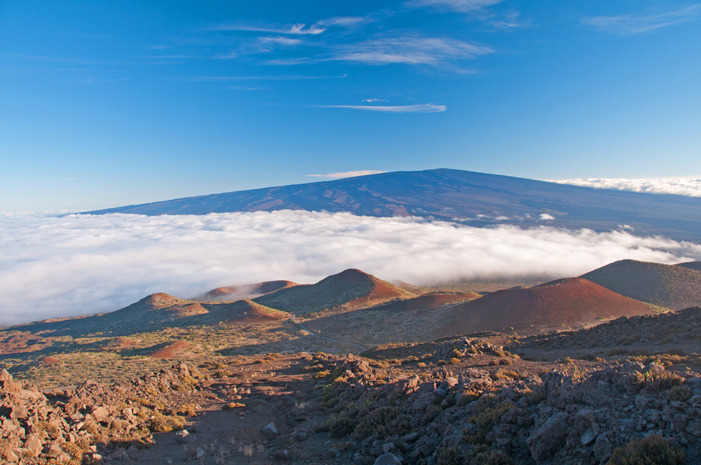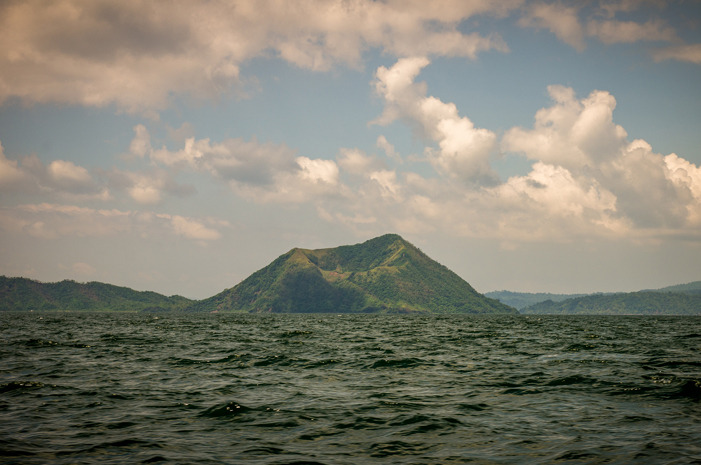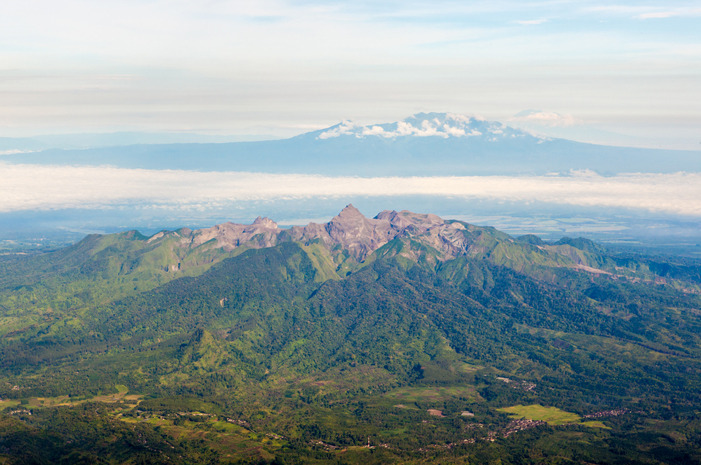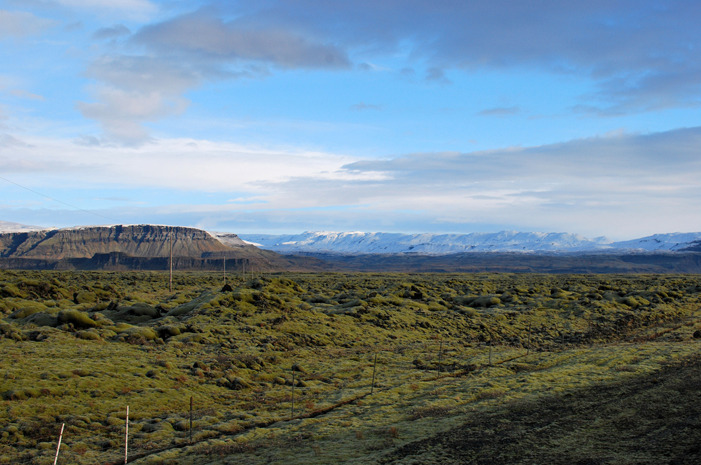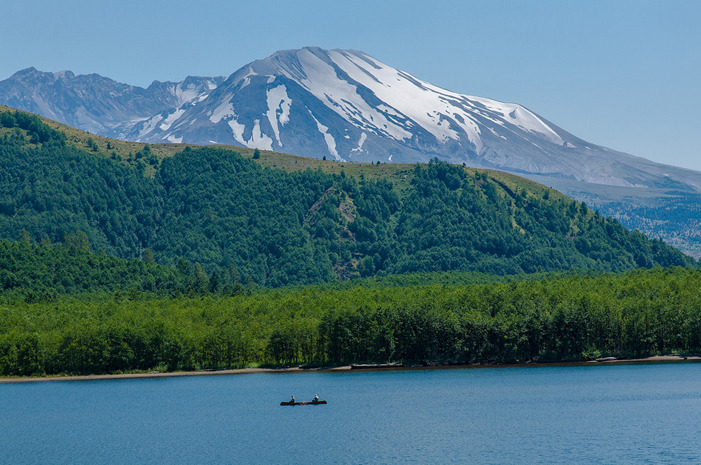The Most Dangerous Volcanoes On Earth
Yellowstone National Park, USA
Yellowstone National Park is an active supervolcano. Yes, the majority of the park is a volcano. There have been at least three eruptions, 2.1 million years ago, 1.2 million years ago and 640,000 years ago. The most recent eruption collapsed and created a giant crater.
Mt. Aso, Japan
The Aso volcano is one of the world's most active. According to Volcano Discovery, "3 people were killed and 11 injured by ballistic blocks ejected by an explosion that occurred at about 1pm local time on 6 September 1979." They also explain, "2 tourists were killed by volcanic gas 100m south of the rim of Crater 1 on 23 November 1997. Since 1980, more than 70 people have been injured by volcanic gases at Aso."
Mt. Merapi, Indonesia
Erupting approximately every 5-10 years, Mt. Merapi is Indonesia's most active volcano. Several of these eruptions have ended in death and you can almost always see smoke emerging from the mountaintop. In 2010, the Indonesian government warned nearby villagers to move to safer grounds. About 19,000 people were affected.
Mt.Vesuvius, Italy
Mt. Vesuvius is located in Italy and is the only active volcano in mainland Europe. It is most famous for its historic eruption in 79 AD, which destroyed the cities of Pompeii and Herculaneum. In the last 17,000 years, Mt. Vesuvius has experienced eight major eruptions and approximately 16,000 people have been killed.
Mayon, Philippines
The Mayon volcano is frequently erupting. It produces extreme lava flows that travel far down the flanks. Frequent eruptions produce mud flows and ash falls that require all residents to evacuate. Lowland areas have been destroyed by eruptions.
Galeras, Columbia
The Galeras volcano has been active for more than a million years. According to Volcano Discovery, "Galeras is one of Colombia's most active volcanoes. In an eruption in 1993, it killed a group of scientists and tourists who had been inside its crater when it erupted."
Popocatepetl, Mexico
Volcano Popocatepetl is also called "smoking mountain." When Popocatepetl erupts, it's extremely explosive. There was quiet for almost 50 years, but exploded out of nowhere in 1994 and has been blasting in intervals ever since.
Mauna Loa, Hawaii
Mauna Loa means "Long Mountain." It is the largest volcano in Hawaii and one of the most active volcanoes in the world. Eruptions are large and produce rivers of lava that have threatened nearby towns. The first-ever eruption was in 1832 and it last erupted in 1984.
Sakurajima, Japan
Sakurajima is known for its sporadic explosions. In February 2016, Sakurajima exploded, sending lava down the mountain and orange bursts into the sky. According to The Guardian, "The country's meteorological agency said Sakurajima erupted at about 7pm local time (10am GMT). The public broadcaster NHK showed dark grey smoke billowing into the sky and lightning."
Taal Volcano, Philippines
You can't visit the Philippines without visiting the spectacular Taal Volcano. But beware, because it is also one of the most dangerous and active volcanoes in the Philippines. It was formed by powerful explosions and since, it has claimed many lives due to its powerful pyroclastic flows.
Gunung Kelud, Indonesia
According to Lonely Planet, "Kelud is in a near-permanent state of growl – an eruption in 1919 killed 5,000 people and one in 2007 sent smoke 2.5 km. into the air and created a 250 meter-high cone within the caldera." Oh, and there is no public transportation to the mountain, so you may be out of luck while trying to flee.
Katla Volcano, Iceland
Katla Volcano is also home to Myrdalsjokull glacier, and when eruptions occur, they cause massive glacial flooding. The Eruption in 934 AD produced one of the largest lava flows during that time. Iceland On The Web explains, "Icelandic volcanologists are expecting another eruption in the next few years, so Myrdalsjokull and the Katla caldera are being monitored quite closely."
Mount St. Helens, Washington, USA
Mount St. Helens was active in the early 19th century and had a major eruption on May 18, 1980 which killed 57 people. When eruptions occur volcanic ash, steam, water and debris shoot out. Fatalities have been common and some people are still considered missing.
Ulawun, Papua New Guinea
Several thousand people live near the Ulawun volcano, so beware if you reside close by. Since the 18th century, there have been 22 recorded eruptions. Volcano Live explains, "Ulawun volcano is composed of lava flows interbedded with tephra composed of basalt and andesite."
Mt. Nyiragongo, Democratic Republic of Congo
Mount Nyiragongo is located in Virunga National Park in the Democratic Republic of Congo. Since 1882, the volcano has erupted at least 34 times. Its lava races extremely fast downhill causing danger to humans and is made up of melilite nephelinite, a type of volcanic rock that causes unusual fluidity of the lava.
